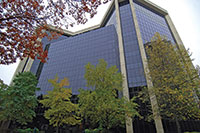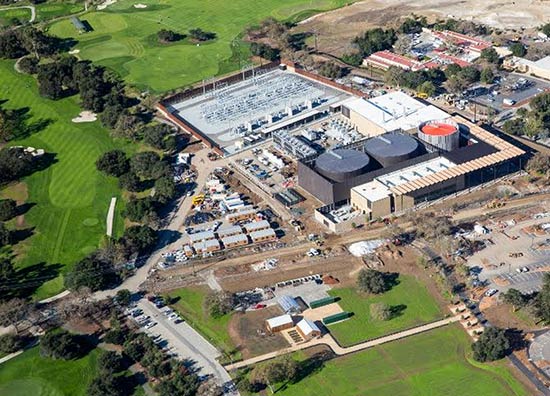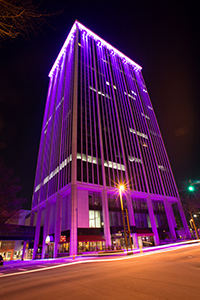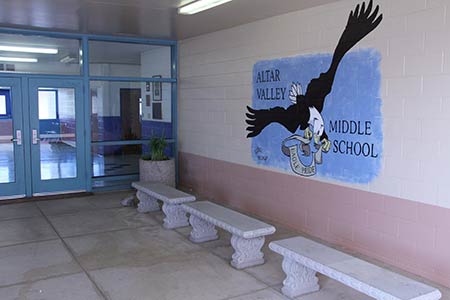view all Case Studies
Optimizing Domestic Water Pressure Boosting System Cuts Energy Use at Seattle Office Building

Confronted by a failing domestic water booster pump at one of its downtown Seattle commercial properties, property management firm Martin Selig Real Estate began searching for options to repair the existing tri-plex boosting pump system.
FacilitiesNet Staff July 20, 2015 -
Plumbing & Restrooms
Confronted by a failing domestic water booster pump at one of its downtown Seattle commercial properties, property management firm Martin Selig Real Estate began searching for options to repair the existing tri-plex boosting pump system.
The booster station serves the 43-story commercial office building at 1000 2nd Ave., located blocks from the Puget Sound waterway. Such high-rise buildings — including hotels, multifamily, office, and other institutional applications — require pressure boosting equipment to raise incoming municipal water pressure to serve upper floors. Demand for water in such multi-story buildings can vary significantly throughout the day, and this unpredictable flow places extraordinary demands on pumping equipment.
The existing pumping station employed a pressure boosting system that was installed when the building was constructed in 1987. The system consisted of one 20 horsepower (hp) and two 30 hp vertical turbine pumps, ran at full speed and the pressure was controlled by pressure regulating valves, which reduced the system’s overall efficiency, and required scheduled annual maintenance.
Due to the simplistic control technology employed, one of the pumps ran 24 hours a day regardless of flow demands, wasting electricity and also decreasing the equipment’s life expectancy from the excessive heat and hydraulic forces generated from operating when there is no flow demand.
To Repair or Replace?
Repairing the pumping station was the anticipated plan, to the tune of $17,000. But in addition to providing the repair quote, Grundfos suggested that the property management’s investment would be better spent on a new, more efficient water boosting system, and suggested an energy audit to determine the building’s actual pressure requirements, given the condition of the existing 27-year-old pumps.
A pump audit using flow, power, and pressure meter/loggers recorded performance data for a two-week period. Grundfos used the data derived from the pump audit to select the optimum replacement system. A Grundfos Hydro MPC BoosterpaQ was installed. The integrated pumping system utilizes a controller to adjust pump speed and stage additional pumps as necessary to meet specific pressure demand.
The replacement Hydro MPC BoosterpaQ pressure boosting system is equipped with Grundfos CR vertical multi-stage centrifugal pumps. Each of the pumps is coupled to a 7.5 hp Grundfos MLE integrated variable-speed drive and motor. The Multi-Pump Controller (MPC) manages VFD controlled pumps in parallel fashion. The pump performance curves are loaded into the controller on the Hydro MPC BoosterpaQ, which selects the most efficient combination of pumps and pump speeds to precisely match the flow and pressure demand. In the end, the new system offers an average 86 percent reduction in energy use.
One way to leverage the savings realized by moving from a constant-speed pumping system to a variable-speed, demand-based platform is to apply for a utility incentive. Grundfos worked with the local utility, Seattle City Light, to secure a power reduction incentive for the property management customer. Like many utilities, Seattle City Light's Energy Smart Services program, offers financial incentives to help medium and large businesses reduce electricity use, save money and shorten the payback on energy-efficient investments. Seattle City Light is currently offering an incentive rate of $.27 per kWh reduction in the first year of operation for this type of project. This project garnered a utility incentive of more than $29,000, based on an annual estimated energy savings of 108,624 kWh.
Due to the success of the booster pump retrofit at the 1000 2nd Avenue location, Martin Selig Real Estate made similar upgrades at two more downtown office buildings.
Next
Read next on FacilitiesNet












